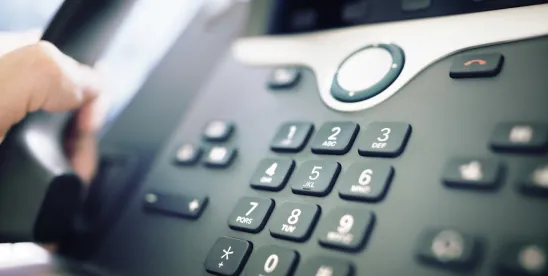The Seventh Circuit recently held in Gadelhak v. AT&T Services, Inc., 950 F.3d 458 (7th Cir. 2020) that the statutory definition of ATDS requires that a device have the capacity to randomly or sequentially generate numbers to be dialed. That same conclusion was reached earlier this year by the Eleventh Circuit in Glasser v. Hilton Grand Vacations Co., 948 F.3d 1301, 1310 (11th Cir. 2020). While these major changes in the law have netted favorable summary judgment rulings for Defendants, they have, frustratingly, not had the same effect at the pleading stage. Although the law has changed significantly, many courts have maintained the status quo at this early stage of the case, finding that garden variety allegations of pauses and clicks are still enough to plausibly plead the use of an ATDS.
So what does this mean practically speaking? It means that defendants get stuck spending a bunch of money litigating a case well past the pleading stage to prove the obvious: that its list-base dialing device does not have the capacity to randomly or sequentially generate numbers. However, for the changes in the law resulting from Gadelhak and Glasser to mean anything—particularly within the jurisdictions in which they are binding—something more must be required to plausibly plead that a defendant was calling randomly or sequentially generated telephone numbers.
Fortunately, one lower court in the Seventh Circuit has recognized this reality in granting a defendant’s Fed. R. Civ. P. 12(b)(6) motion to dismiss. Perez v. Quicken Loans, No. 19-cv-2072, 2020 U.S. Dist. LEXIS 53476 (N.D. Ill. Mar. 27. 2020). The court rightly found that, in light of Gadelhak, “it is fair to conclude that the standards for pleading and proving a claim under [47 U.S.C.] section 227(b)(1)(iii) have been raised, especially in regard to the second element,” concerning a device’s capacity to randomly or sequentially generate numbers.
In Perez, Plaintiff pointed to the following in alleging that Defendant had used an ATDS when calling Plaintiff: (1) a several second pause before a live representative began to speak; (2) continued calls after Plaintiff demanded that the calls stop; and (3) the “nature” and “frequency” of Defendant’s contacts. The court found that these garden-variety allegations were “too thin to support an inference that Defendant used an ATDS to make calls.”
While the court did grant Plaintiff leave to amend—giving her another bite at the apple—it provided the following admonishment:
Plaintiff should take care to include in her second amended complaint more robust allegations about the extent and timing of her interactions with Defendant's representatives, as those details may inform whether she has sufficiently alleged the use of an ATDS. While it is true, as many courts have observed, that a plaintiff should not be required to plead specific facts as to the technical specifications of the type of call system employed by the defendant, it also cannot be the case that every barebones TCPA claim can survive a motion to dismiss by alleging unwanted calls and a short period of dead air when the call is answered. And it is not too much to ask that a plaintiff who was so frustrated over persistent calls from the same number to have contacted a lawyer actually recall and set down in a pleading the details of the interactions that led her to bring a federal case.
The Plaintiff will undoubtedly amend, and it seems exceedingly likely that the Defendant will challenge those amended allegations in another motion to dismiss. As such, Perez may be one case in which we start to see the standard for pleading ATDS use finally evolve past the status quo, in recognition of the major changes in the law effected by cases like Gadelhak. And for now, the court’s ruling in Perez is at least one step in the right direction.



 />i
/>i
